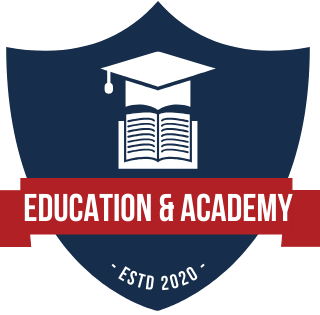For students in the 11th class and 12th class in Punjab, big changes have been announced regarding their curriculum. A new curriculum for Intermediate Classes in Punjab has been made, which needs to be followed by all colleges on a compulsory basis. So, the question is, are the colleges ready to implement this update? The answer to this question will be answered thoroughly in this blog.
We will talk about the new curriculum of intermediate, why it was changed, and how colleges under the Punjab board, mainly Lahore board, Multan board, and Gujranwala board, are getting ready for this new change.
Let’s find out what this means to teachers, students, and parents.
New curriculum for Intermediate in Punjab
At the beginning of the academic year 2025, for intermediate students, the new curriculum for Intermediate in Punjab is now being rolled out by Punjab’s government and the Punjab Curriculum and Textbook Board (PCTB). Variations in the syllabus and books are the revisions in the curriculum that need to be followed by the Lahore Board, Multan Board, and Gujranwala Board.
In different subjects, some new and advanced topics have now been added to move the students from memorising to concept-based learning. This is so because concept-based learning helps students to learn better, builds conceptual understanding, retains more, and boosts their job prospects. Also, it improves the level of engagement and excavates disciplinary understanding.
25% conceptual questions will be added to the pattern of the exam. This will be implemented from 2025 onwards. This helps to lift critical thinking over rote memorization.
After securing the necessary copyright agreement, five core textbooks have been replaced by the Punjab Boards Committee with internationally benchmarked texts. The books consist of Biology, Chemistry, Mathematics, Physics, and Computer Science.
There is a change in the grading system as well. A new GPA-based system with a 10-point grading scale will be introduced effective from the beginning of 2026 for class 9 & 11. The previous system, which had a 7-point grading scale, has been replaced by the new grading system.
Why is a New Curriculum for Intermediate in Punjab Required?
The reform in the curriculum to make a new curriculum for intermediate in Punjab was due to several key reasons, which are given below:
Increase Quality of Learning
The shift to a new curriculum makes education more practical and student-centered. Students will be able to learn in a more evocative and better way. This is due to the addition of hands-on evaluations, critical thinking exercises, and extra-curricular assessment together with theory. To foster complete development, the structure includes the presence of sports, community, and service projects.
Placement with National Standards & Global Significance
To uplift educational standards, the new curriculum corresponds with the National Curriculum Framework (NCF). Moreover, it also brings structure and consistency across provinces. The leading Punjab’s education authority is the Punjab Education Curriculum Training and Assessment Authority (PECTAA). This drives innovation in curriculum, assessments, teacher training, and school monitoring.
Preparedness for Future Pathways
Through the reforms in the curriculum, students become better equipped for higher education and careers. This is so because a shift in curriculum fosters problem-solving, creativity, and innovation. Also, it encourages critical thinking, holistic growth, and practical skills. In this way, students will make themselves ready for future academic and career challenges
Teacher Capacity Building & System Integration
Another reason is to train teachers in modern concepts. The government said existing teachers will receive specialised training to teach the updated curriculum and handle new subjects.
Are the Colleges Ready for the New Curriculum For Intermediate in Punjab?
The colleges in Punjab are getting ready for this shift in the curriculum for intermediate. Textbook revisions, assessment changes, and curriculum frameworks are officially approved. Colleges across Punjab are implementing this transformation. Some famous college networks in Punjab, Pakistan, are taken as an example.
These colleges take the initiative for teacher training to sustain the implementation and pedagogy of the new curriculum. The goal of this training program is to equip the teachers with the right tools and training for curriculum transformation.
Moreover, these colleges are fully aligned with academic content, teaching resources, and digital tools. They also upgrade their modern science, robotics, and computer labs according to the new syllabus and exam structure.
But there are some challenges faced by some colleges as well due to a lack of readiness across the board sector. While the leading colleges appear well-prepared to carry the new curriculum, some colleges may lag due to the inaccessibility of proper resources, digital access, teacher preparedness, continuous monitoring, and funding.
So, there is a need to mitigate these challenges. This can be done by continuous rollout, resource allocation, and teacher support. These factors will be the key to making the curriculum implementation steady province wide.
Matric 2025 result is out. Admissions 2025 in Intermediate are Open. You need to select the college that is well-prepared to teach children according to the new curriculum for intermediate.
Final Thoughts
The new curriculum for Intermediate in Punjab entails a big change for 11th class and 12th class students. This involves the replacement of some books by adding new topics, the addition of conceptual questions in exams, and changes in the grading system. The main purpose is to shift the education standards from memorising to concept-based learning. Many colleges in Punjab are working on this curriculum transformation through teachers’ training, academic content, digital tools, and teaching resources. But some colleges are still lacking in proper resources, digital access, and teacher preparedness, which need to be resolved with a proper strategy.



